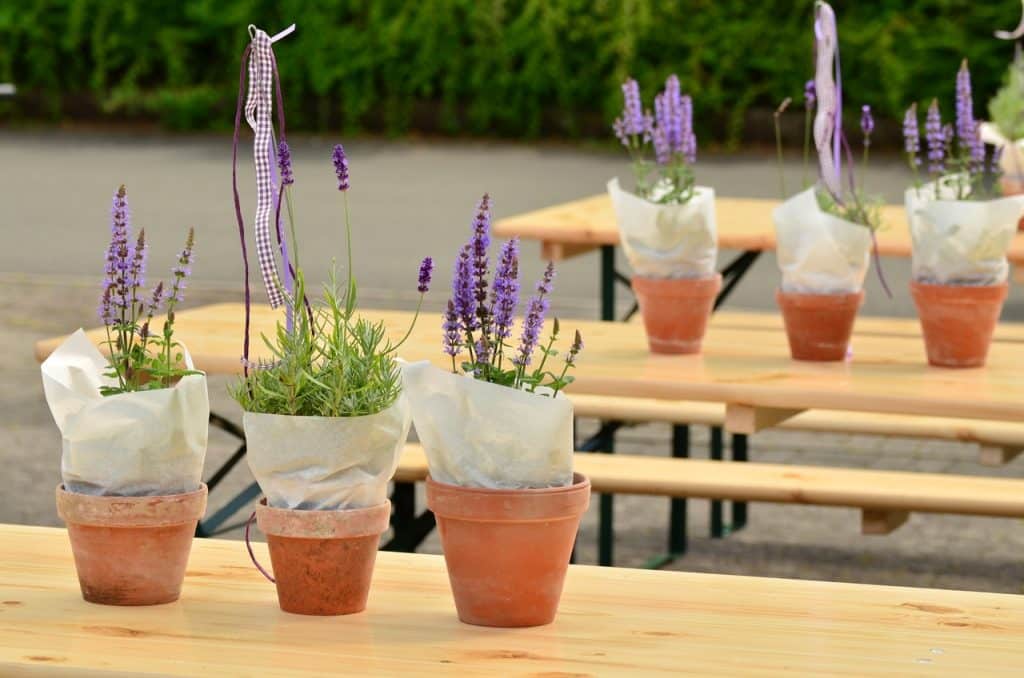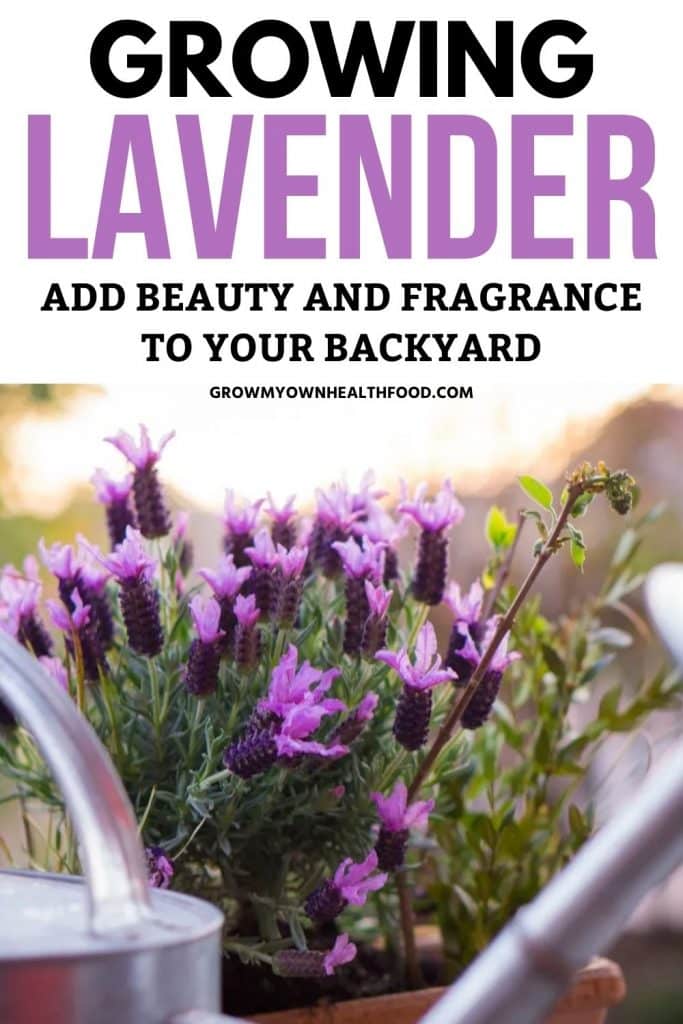Lavender is a great plant to have growing in your backyard garden. Most gardeners love this plant as it has a pleasant fragrance and is also great for your skin. Lavender is a perennial plant which means it lives more than two years. It also adds to the beauty of your garden by attracting loads of butterflies, bees, and other pollinators.
Lavenders thrive in full sun and sandy soils and don’t require too much water which is why they are native to Mediterranean countries like Italy, Spain, and France. However, now they are grown all over the world. If you are planning on growing lavenders in your garden here are a few things that you must keep in mind to make sure you give your plants the best chance to thrive.
Ideal Conditions to Plant Lavender
Lavender is a Mediterranean native plant which means it is going to need lots of sunlight and well-drained soil. The best time to start planting lavender is just after the threat of frost has passed and the soil has warmed up to around 60 degrees Fahrenheit.
When planting lavender you don’t need to use organic matter to amend the soil because it grows best in low to the moderately fertile soil. However, you can add a bit of lime to the soil before planting to raise its pH to around 7. If you are growing lavender in your garden, it is very important that you space your plants by at least 1 to 3 feet depending on the variety of the plants.
- Grows Plants Twice as Big vs. unfed plants
- Feeds up to 6 months
- More blooms for more color vs. unfed plants
- For indoor and outdoor container plants
Prices pulled from the Amazon Product Advertising API on:
Product prices and availability are accurate as of the date/time indicated and are subject to change. Any price and availability information displayed on [relevant Amazon Site(s), as applicable] at the time of purchase will apply to the purchase of this product.
In colder areas, you should plant lavender in spring or early summer, whereas in warmer areas early fall is the best time to start planting as it will help the roots get established during the cool, moist winter weather.
How Long Do Lavender Plants Take To Fully Grow?

If you are growing new lavender plants from seeds they can take anywhere between 90 to 200 days to reach maturity. However, it might not be very easy to tell when your plants have matured if you are growing them for the first time. It’s the plant’s height and spread that will give you an idea of when your plants are ready. When the plant becomes 1 to 2 feet in length with an equivalent spread it is considered fully matured.
Growing Stages of Lavender
Although Lavender is a Mediterranean plant it can thrive in tough environments if provided with enough sunlight and sufficient drainage. If you plan to grow lavender in your yard, here are the lavender growing stages that you will need to follow to have a good yield.
Finding the Best Location for Lavender
As lavender is a Mediterranean plant it needs a lot of sunlight and dry soil. So, you should look for a spot in your garden that gets plenty of sunlight, preferably more than 6 hours of direct sunlight every day.
It is best to plant lavender in spring or early summer when the soil is nice and warm, however, if you plan on planting in the fall, you should use well-established plants that can survive the harsh winter conditions. One of the ways to protect your plants during the winter season is to plant them near a dining area, at the base of a rose bush, or near your entryway. This will make sure that your plants stay safe from the strong winter winds.
Planting Lavender
Growing lavender from seeds can be quite challenging which is why it is best to get lavender plants from your nearby nursery rather than seeds. This gives your plants the best chance to thrive as they are already accustomed to your environment.
- CERTIFIED ORGANIC LAVENDER FLOWERS (EXTRA GRADE) - 4oz Resealable Bag
- IMPORTED 100% RAW FROM FRANCE - This bag contains certified organic, 100% raw lavender flowers from the fields of southern France.
- HEALTHY & DELICIOUS - Relax your body and your mind by adding a dose of lavender into your day. Enhance your favorite recipes, fill the air with an aromatic potpourri or gift craft sachets to your friends and fami
Prices pulled from the Amazon Product Advertising API on:
Product prices and availability are accurate as of the date/time indicated and are subject to change. Any price and availability information displayed on [relevant Amazon Site(s), as applicable] at the time of purchase will apply to the purchase of this product.
Alternatively, if you want to grow lavender from seeds you will need to make sure that you get the seeds that are appropriate for your region. Now you are ready to plant. Make a hole big enough to hold the roots and place your plant in it. Make sure to space your plants 1 to 3 feet as they can grow quite large
Caring for Your Lavender Plants
Lavender plants need to be watered at least twice a week until they develop into well-established plants. Avoid overwatering once the plants are established as lavender is drought-tolerant and doesn’t require frequent watering. Moreover, overwatering can cause your plants to develop root rot and show symptoms of stress like drooping or wilting appearance. In early spring use mulch or fertilizer, but make sure you don’t add too much fertilizer as that can result in unhealthy growth.
- Use Miracle-Gro Performance Organics Blooms Plant Nutrition Granules to feed flowering plants
- OMRI listed plant food promotes more blooms (vs unfed potted plants) organically for vibrant color in flowers
- Enjoy Miracle-Gro results with organic and natural ingredients
- Reapply every 4-6 weeks and water regularly for best results
Prices pulled from the Amazon Product Advertising API on:
Product prices and availability are accurate as of the date/time indicated and are subject to change. Any price and availability information displayed on [relevant Amazon Site(s), as applicable] at the time of purchase will apply to the purchase of this product.
One of the most challenging aspects of caring for lavender plants is pruning. You will need to keep an eye on your plants throughout the year. Make sure that there aren’t any dead or dying shoots and keep trimming them on a regular basis.
Harvesting Lavender

Lavender can be used for a variety of reasons. Although most people will use it for decorative purposes, some people also use it for cooking and medicinal purposes. No matter what your intentions for your lavender plants are, here are a few things that you need to keep in mind about harvesting them.
During the day the heat of the sun draws out the fragrant essential oils that the lavender plants. Thus, it is important that you do all your harvesting in the early morning just after the dew has dried. Because this is when the oils in these plants are most concentrated.
Do Lavender Plants Grow in Shade?
As mentioned earlier lavender needs plenty of sunlight to thrive which is why they do not grow well in shade. If your plants get any less than 6 hours of direct sunlight during the growing season, you will get fewer flowers and poor growth. Plus, the plants will soon die out if planted in a shaded area.
Growing Lavender – Conclusion
Whether you want to grow lavender for its beautiful color and fragrance, its culinary utilities, or its therapeutic applications you will need to follow the development steps mentioned above to cultivate healthy lavenders. Remember that Lavender is not a very easy plant to grow. Lavender has the ability to tolerate tough conditions and withstand harsh growing environments. However, it is going to need adequate drainage, lots of sunlight, and plenty of year-round care to thrive.










